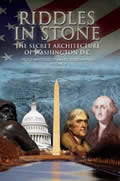PART 1 of 2
By
Servando Gonzalez
May 3, 2014
NewsWithViews.com
A few days ago I finished reading a book that has been in my reading list for more than a year: Brian Latell’s, Castro’s Secrets: The CIA and Cuba’s Intelligence Machine (New York: Palgrave Macmillan, 2012). Latell is a retired CIA intelligence officer and currently a Senior Research Associate at the Institute for Cuban and Cuban American Studies at the University of Miami.
I am always wary about books written by ex-intelligence officers or by authors who use intelligence officers as sources.[1] The problem with ex-intelligence officers is that intelligence work is actually very boring — good intelligence officers die in their beds of old age and not even their families or close friends ever know their true jobs. Exciting spy stories always come from the sloppy officers, the ones who get caught.
Nevertheless, in order to sell their books, intelligence officers put their fertile imaginations to work and creatively enhance their spy stories. Therefore, it is recommended to take everything they say with a big chunk of salt. The reason for this is because of some characteristics intrinsic to their profession.
Two key principles of intelligence and espionage are compartmentation and need-to-know. Translated into plain English, this means that the left hand doesn’t know what the right hand is doing. Like in the old Indian story, the blind men only see in their minds the part of the elephant they are touching, which amounts to confusion on the overall idea of what kind of animal they are dealing with.
So, unless you have been the director of an espionage service, you have no idea of the whole picture. But ex-CIA directors don’t write books, and when they do, the book is just a collection of funny fiction and outright lies — e.g. Allen Dulles’ The Craft of Intelligence.
Latell’s book compounded my wariness, because it has been written by an ex-CIA officer whose main source of information is an ex-intelligence officer. Unfortunately, my suspicions were confirmed as soon as I began reading the book. Latell’s main source of information is Florentino Aspillaga, a Cuban intelligence officer who defected some years ago and is now living in the U.S.
I am not implying that what Aspillaga told Latell is not true. But in the field of intelligence and espionage, intelligence is just information that has been evaluated, validated or appraised. So, because we have no way to confirm the true value of what he told Latell, most of what Aspillaga said becomes useless and irrelevant. What it is simple incredible, at least to me, is that a trained, experienced ex-intelligence officer, as Latell is supposed to be, has taken as intelligence the unconfirmed information Aspillaga told him.
Well, there are some reasons for it. In his book, Latell tries to describe himself as a field intelligence officer: “During one of my visits to Havana, when I was a senior intelligence community official well known to the Cubans, I was followed by a large squad of surveillants …” [p. 40] Anyway, I’ll bet that the “large squad of surveillants” that were following him were more interested in what he carried in his wallet than what he carried in his brain.
We need to keep in mind that, despite his effort to paint himself as a sort James Bond, Latell was just an intelligence analyst at the CIA — as he himself tells in his book, he was a “CIA Cuba desk analyst.” [p. x] So, most of what he knows about tradecraft most likely he learnt reading spy novels and books written by ex-intelligence officers. Castro’s Secrets is proof of this.
A close reading at this book shows his supreme ignorance of key elements of the field officer’s trade. An example of this is Latell’s total ignorance of firearms. He reproduced without evaluation the information about how one of Castro’s intelligence officers, Miguel Medina Pérez, used a Makarov pistol on a failed assassination attempt on Aspillaga. But, according to what Aspillaga told Latell, and he took at face value, Medina was not a field agent, and had no experience with handguns, so he fired the Makarov “erratically, with one hand, the large pistol wavering and recoiling sharply with each shot.” [p. 32] In the previous page Latell describes the Makarov as a “larger and heavier weapon.”
It seems that Latell confuses the Makarov, a relatively small semi-auto pistol modeled after the Walter PPK, with the selective full-auto Stechkin, a big pistol comparable in size to the Desert Eagle or the 1911 .45 ACP. Actually, the Soviet Makarov fires the underpowered 9X18 mm cartridge, and its recoil is minimal.
Overall, Latell’s book reads like a spy novel. Actually, it is a spy novel. Most of what he wrote is pure fiction, or fiction Aspillaga told him and he was unable to evaluate and appraise to change it into true intelligence. Analyzing in detail the undiluted poppycock passed as intelligence in this book would make this review too long, so, I am going to mention just a few items.
In another section of his book Latell tells the story about the first encounter of Aspillaga, after his defection, with a CIA officer he admired. Aspillaga told Latell how just after a few minutes of their first meeting, “The rivals were suddenly now professional colleagues, playing on the same team. Aspillaga told me his respect for the CIA officer soared. They hugged in a tight Cuban-style abrazo.” [p. 29] It is simply amazing that Latell has taken this unadulterated hogwash at face value and has reproduced it verbatim in his book.
Latell is apparently unaware that a few pages below he provides information that clearly points to the fact that Aspillaga’s story can't be true. According to Latell, “With or without an American polygraph exam, defectors often are vetted and verified within hours of their first meetings with knowledgeable intelligence professionals.” [p. 35]
So, if just a few minutes after he met Aspillaga, this CIA officer accepted at face value Aspillaga’s bona fides, this CIA officer should had been fired because of gross incompetence. The fact that he wasn’t confirms that Aspillaga’s story, as reproduced by Latell in his book, is pure fiction.
In his book, Latell devotes several pages to tell us about an amazing “new” discovery: a secret letter Castro sent to Soviet Premier Nikita Khrushchev during the Cuban missile crisis, asking him to launch a preemptive nuclear attack on the United States. (pp. 49-62) According to Latell, “… for twenty-eight years Castro ‘Armageddon letter’ was one of his best-kept secrets.” Well, not really, because in my 2002 book The Nuclear Deception I study it in detail. Moreover, in it I show evidence that asking Khrushchev to launch a nuclear attack on the U.S., and shooting down a U-2 plane flying over Cuba were not the only attempts Castro has made to push the world into a nuclear Armageddon.[2]
By the way, on page194, Latell mention en passant that Oleg Penkovsky, a Soviet GRU colonel who played an important role in the Cuban missile crisis, “was a fully vetted and trusted spy.”
Despite Latell’s claims, however, not everyone in the American and British intelligence services bought Penkovsky’s story. James Jesus Angleton, the legendary CIA’s Chief of Counterintelligence, had serious doubts about Penkovsky’s bona fides. According to Joe Bulik, one of the CIA officers who had an active participation in the Penkovsky case, the last time he saw Angleton, he told him that every case he had ever worked on inside the Soviet Union over the past seven years had been controlled by the KGB, including the Penkovsky case.
Angleton was apparently not the only one skeptical about Penkovsky. Some members of the British Security Service, MI5, believed that Penkovsky was nothing but a Soviet “plant,” the key figure in a Russian disinformation exercise of the highest political consequences.
Moreover, according to the widely accepted legend, the CIA analysts had been able to determine what was being built because several months before the crisis Penkovsky had given them the operational manual of exactly the same type of missiles the Russians were now deploying in Cuba. But CIA analysts who accepted Penkovsky’s information at face value made a big mistake.
An elementary rule of tradecraft states that when there is an unexpected, unexplainable change in the opponent’s behavior, the first thing to suspect is deception. According to the CIA’s own prescribed tradecraft practices, as stated in the document A compendium of Analytic Tradecraft Notes, there are warning signs to detect enemy deception which address the likelihood that a country or organization is engaged in a disinformation attempt. One of the warning signals is “suspicious confirmation,” defined as “A new stream of information from clandestine sources or technical collection seems to reinforce the rationale for the [opponent’s] action.”[3] That was exactly what Penkovsky did.
The author of the Notes was Jack Davis, a retired officer who spent 40 years as practitioner, teacher, and critic of intelligence analysis. Though the Notes were published in 1997, they just summarized tradecraft practices that have been standard operating procedures in the CIA for many years, including during the Cuban missile crisis. Therefore the gross failures in tradecraft by the CIA analysts and the CIA officer’s inability to detect the Soviets’ deception efforts cannot by any stretch of the imagination be attributed to errors, but to a willful desire to mislead the American decision-makers.
In his analysis of the Bay of Pigs invasion, Latell just parrots the old disinformation story that the only one to blame for the disaster was President Kennedy. He fails to mention, though, that behind every single “mistake” that caused the failure of the Bay of Pigs invasion was a member of the nefarious Council on Foreign Relations (CFR) “advising” Kennedy to do so. They were the ones who manipulated Kennedy to make the fateful decisions that contributed to the disaster
For example, both CIA Director Allen Dulles (CFR) and Deputy Director for Plans Richard Bissell (CFR) were so enthusiastic about the operation that Dulles told President Kennedy he was certain that “our Guatemalan operation would succeed,” adding that the prospects for the invasion’s plan to succeed were even better than they were for that one. Kennedy assumed that Dulles and Bissell’s optimism about the success of the Cuban invasion was because the operation had “the Agency’s full authority behind them.” Kennedy ignored, however, that both Dulles and Bissell had never informed the analysts working in CIA’s Intelligence Directorate about the upcoming invasion.
Other authors blame President Kennedy for giving the fateful order that changed the invasion’s landing point. They don’t tell, however, that Kennedy ordered the fateful change following the advice of McGeorge Bundy (CFR), Adlai Stevenson (CFR), and John McCloy (CFR) A few days later, on April 4,1961, CIA’s Richard Bissell (CFR), outlined an alternative plan for the invasion, with the Bay of Pigs instead of Trinidad as the landing place. The trap had been set.
|
It is also true that Kennedy ordered the cancellation of the rest of the planned air strikes previous to the invasion. As a result, some of Castro’s fighter planes were left untouched. These were the planes that shot down the invaders’ planes and sank their ships, thus guaranteeing that the Bay of Pigs invasion failed. But Kennedy cancelled the air strikes only after McGeorge Bundy (CFR), Dean Rusk (CFR), and Adlai Stevenson (CFR), persuaded him to do so.
Nevertheless, despite the fact that since its very creation the CIA has been an organization controlled by the Council on Foreign Relations, and that most CIA directors and chiefs of covert operations have been CFR members, the CFR is never mentioned in Latell’s book. For part two click below.
Click here for part -----> 2,
� 2014 Servando Gonzalez - All Rights Reserved
Footnotes:
1.
See, i.e., my review of Joseph Trento’s Prelude to Terror,
which I aptly titled “A
CIA Cock and Bull Story.”
2.
Servando Gonzalez, The Nuclear Deception: Nikita Khrushchev and the
Cuban Missile Crisis (Oakland, California: Spooks Books, 2002), pp.
149-161)
3.
See, Central Intelligence Agency, A compendium of Analytic Tradecraft
Notes, Washington, D.C. February 1997.
4.
See, Dariel Alarcón Ramírez Memorias de un soldado cubano.
Vida y muerte de la Revolución (Barcelona: Tusquets, 1997).
5.
Ronald Kessler, Inside the CIA (New York: Pocket Books, 1992),
p. 53.
6.
Both Castro and the CIA collaborated in destabilizing the Allende government
—the CIA by painting him as a radical leftist and Castro by openly
criticizing him for not being radical enough. Moreover, if recently surfaced
information is true, Allende did not commit suicide: his Cuban security
chief, General Patricio de la Guardia, killed him, following Castro’s
direct orders. See my article “Fidel
Castro: asesino de Allende?,”
7.
See, Servando Gonzalez, “Hugo
Chávez: Another Victim of Castro’s High-Tech Political Assassinations?
8.
On the downing of the Cuban airliner, see, Servando Gonzalez, The
Secret Fidel Castro: Deconstructing the Symbol (Oakland, California:
Spooks Books, 2001), Chapter 3, note 39, p. 383.
9.
See, Servando Gonzalez, The Secret Fidel Castro: Deconstructing the
Symbol (Oakland, California: Spooks Books, 2001), pp. 96-131.
10.
In his book Failure of Intelligence: The Decline and Fall of the CIA,
professor Melvin Goodman, a former CIA intelligence analyst, devotes a
whole chapter, to show how most of the alleged CIA intelligence failures
actually have not been attributable to CIA analysts, who alerted timely
about the outcomes, but to CFR agents in the U.S. Government who paid
no attention to the alerts. See Melvin A. Goodman, Failure of Intelligence:
The Decline and Fall of the CIA (Lanham, Maryland: Rowman & Littlefield,
2008), pp. 63-88.
11.
See, Spencer Ackermann, “CIA
and White House Under Pressure After Senate Torture Report Leaks,”
The Guardian, April 11, 2014.
12.
These are the cases of ex-CIA officers like Victor Marchetti, Ralph McGehee,
Frank Snepp, and CIA assets like Col. Fletcher Prouty.
Servando Gonzalez, is a Cuban-born American writer, historian, semiologist and intelligence analyst. He has written books, essays and articles on Latin American history, intelligence, espionage, and semiotics. Servando is the author of Historia herética de la revolución fidelista, Observando, The Secret Fidel Castro: Deconstructing the Symbol, The Nuclear Deception: Nikita Khrushchev and the Cuban Missile Crisis and La madre de todas las conspiraciones: Una novela de ideas subversivas, all available at Amazon.com.
He also hosted the documentaries Treason in America: The Council on Foreign Relations and Partners in Treason: The CFR-CIA-Castro Connection, produced by Xzault Media Group of San Leandro, California, both available at the author's site at http://www.servandogonzalez.org.
His book, Psychological Warfare and the New World Order: The Secret War Against the American People is available at Amazon.com. Or download a .pdf copy of the book you can read on your computer, iPad, Nook, Kindle or any other tablet. His book, OBAMANIA: The New Puppet and His Masters, is available at Amazon.com. Servando's book (in Spanish) La CIA, Fidel Castro, el Bogotazo y el Nuevo Orden Mundial, is available at Amazon.com and other bookstores online.
His most recent book, I Dare Call It treason: The Council on Foreign Relations and the Betrayal of the America, just appeared and is available at Amazon.com and other bookstores online.
Servando's two most recent books in digital versions only are The Swastika and the Nazis: A Study of the Misuse of the Swastika by the Nazis and the first issue of the political satire series OBSERVANDO: American Inventors.
Website: www.servandogonzalez.org
E-Mail: comments@gmail.com



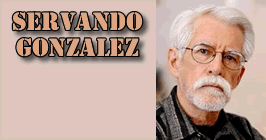


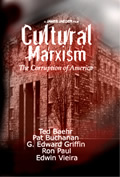
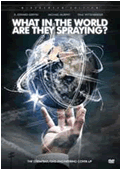
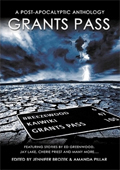




 Share
This Article
Share
This Article
